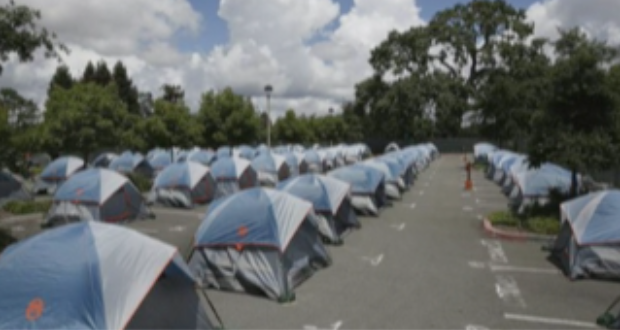
By JONATHAN LEE
City Council weighed in Tuesday on an initial list of 45 city-owned properties that could potentially serve as campsites for people experiencing homelessness, embarking on the logistically and politically fraught process of deciding whether to establish a campsite in each of the 10 Council districts, as proposed earlier this month.
The list includes one property in Four Points at 10900 RM 2222, near River Place Boulevard and the Cardinal Point housing complex. Other sites being considered are near Four Points including: 12101 Anderson Mill Rd. off RM 620, Lakeline Neighborhood Park near the mall, and Bull Creek Park at 7190 Lakewood Dr. near Loop 360.
Though Council has previously rejected campsites, members now see them as a way to offer people displaced by the reinstated camping ban a safe alternative to camping in woods and creeks.
Finding the exact locations will be easier said than done. As soon as the list was released early Tuesday, concerned constituents flooded Council members’ inboxes with emails.
“It’s going to be difficult to locate these,” Mayor Steve Adler acknowledged. “But I think that there has to be a list at some point to start.”
The list is preliminary and subject to change – a point that Council members and city staffers emphasized repeatedly.
“We have nowhere committed a) that we’re doing any of these; or b) that we’re doing 10 of them,” Council Member Alison Alter said.
City staffers have until July 1 to whittle down the list. Council members will then decide the number of sites and their exact locations – if they don’t abandon the plan entirely.
The campsites will have basic amenities like water and electricity, restrooms, lighting, waste services and security, and would ideally be located near grocery stores and public transit. Other services like laundry are also possible but would drive up costs.
Though properties are dispersed throughout the city, East and Central Austin – particularly Council districts 1, 3 and 9 – have a higher concentration of sites.
There were also several unspecified locations that were not included on the map: Colony Park, Tannehill Lane, Levander Loop, Walnut Creek/Havens, and the Eco-Park at FM 973.
As staffers work to eliminate unsuitable properties, others could be added, including privately owned sites or property owned by other government entities. Council Member Kathie Tovo asked community members to suggest sites.
Tuesday’s meeting underscored just how challenging it will be to follow through on the plan.
Council members took much of the time nixing potential locations, such as those in parks, at recreation centers or near fire-prone land.
Though city staffers had already taken off 30 properties out of the 75 that were originally on the list, the remaining 45 had not been vetted for their potential to cause wildfires or harm wildlife.
“There’s much evaluation that still needs to be done,” Parks and Recreation Director Kimberly McNeeley said. “This was the first blush.”
Council Member Pio Renteria struck a location that had been included with seemingly little thought. “Don’t bother looking at that – that’s Evergreen Cemetery,” he said in regard to a site staffers had labeled 1311 Tillery Street. “I know you didn’t want to put a campsite in a cemetery.”
Council members also worried that the campsites, which are intended to be temporary, would become hard to dismantle once set up – a problem other cities have faced. Council’s three-year goal is to provide housing for anyone experiencing homelessness within 30 days, rendering campsites unnecessary. Permanent campsites could also burn a hole through the city’s homelessness budget in perpetuity, jeopardizing housing funds.
“(The costs) are pretty high for this kind of temporary investment,” Council Member Ann Kitchen said. “The thing that we have to be careful of is keeping our focus on more permanent housing and not diverting a lot of funding to temporary encampments like this.”
A 50-person campsite is expected to cost $1,368,800 per year, according to a memo, and a 100-person campsite could cost $1,870,400 per year. Homeless Strategy Officer Dianna Grey acknowledged that these are conservative estimates. Smaller campsites are likely out of the question, she said, due to economies of scale.
Public relations have already proven tricky. Council members said they had received a flood of comments from constituents within hours of the list becoming public, and that some constituents mistakenly thought the locations were final.
“I would urge you to just really, really, really over-communicate on this issue as to what’s happening,” Adler told City Manager Spencer Cronk.
The comments have been so numerous that the city plans to direct comments to one email address.
Despite the concerns, no Council member explicitly opposed the entire plan. Whether the plan moves forward will depend on Council members agreeing to exact locations in their districts – a potentially tough political pill to swallow. Some Council members also indicated that they would back out if not all 10 districts get a campsite.
“There will never be the perfect location,” Adler said. “But I’m happy we’re starting that process, and I think we have to work our way through it.”
The Austin Monitor’s work is made possible by donations from the community.

